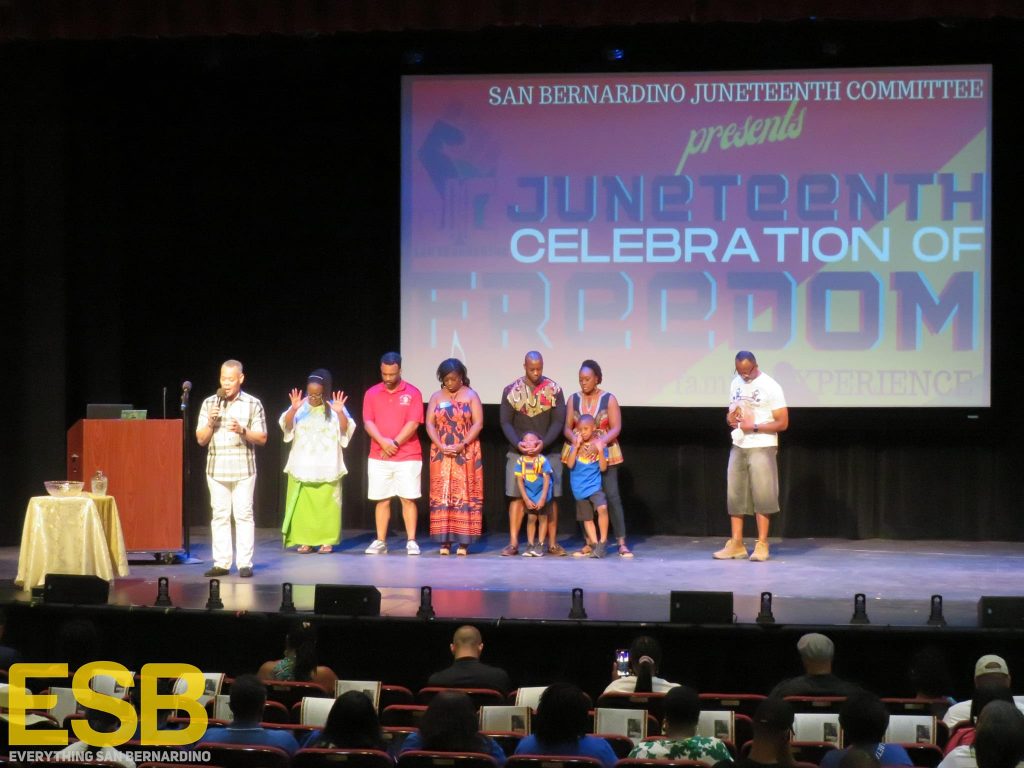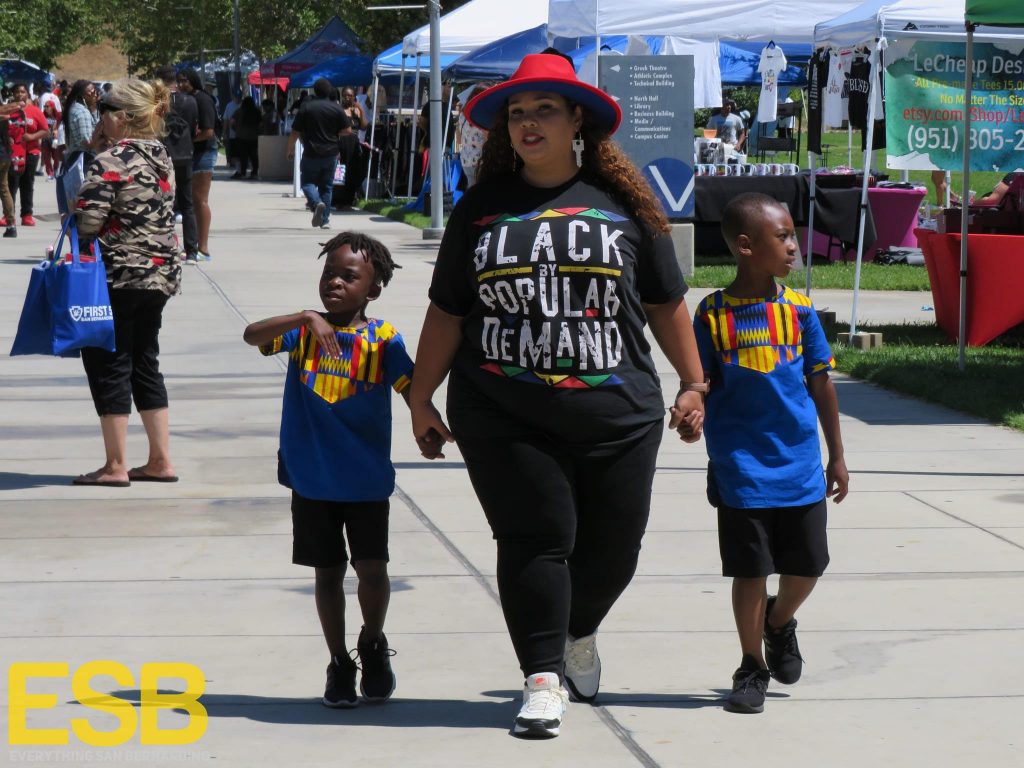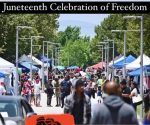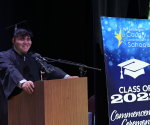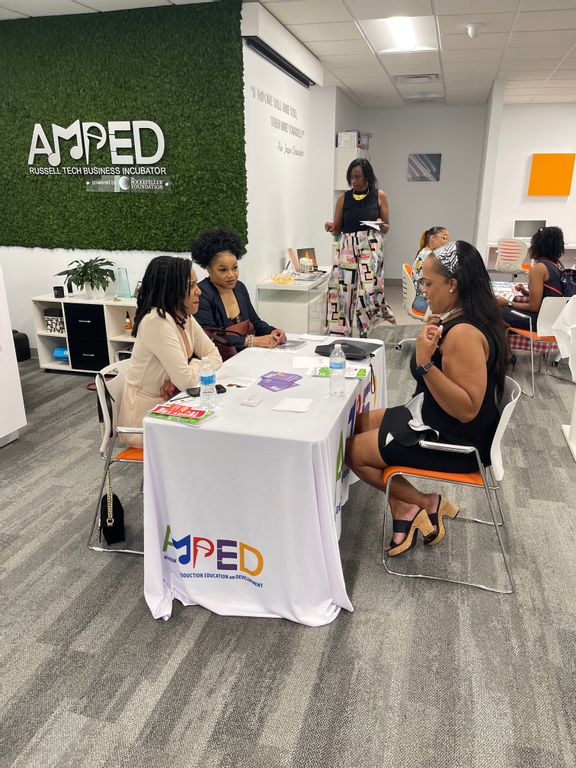The San Bernardino Juneteenth Committee Celebration of Freedom is What it Do!
By Lue Dowdy | LUE Productions
Juneteenth also referred to as “Freedom Day” has now been declared as an official holiday. More than half of the states around the world now acknowledge the date June 19th as a national holiday. The day is a celebration to the end of slavery in the United States.
The Juneteenth celebration at San Bernardino Valley College this past Saturday was EPIC. The weather was perfect, and the vibe was right. There were 1500 plus attendees from all over the Inland Empire and beyond. The theme, “Celebrating Freedom a Fun Family Experience” was just that. It was great to see so many families, friends, and community members coming together in honor of such a historical achievement. Children were laughing, playing, and running freely within the kid’s zone sponsored by First 5 San Bernardino. Food, Resource, and MERCH vendors were placed along one row which was named “Vendor Row”. The row had more than 80 vendors. I was able to get over 30,000 steps in by walking back and forth.
The opening ceremony began at noon and took place in the auditorium hosted by ya’ girl, yes me, Lue Dowdy. Reverend Bronica Martindale, CEO of “Reverend B. Productions”, began with a Libation ceremony, as Pastor Joshua Beckley of “Ecclesia Christian Fellowship Church” led in prayer directly after. The spirit was in the building.
Keynote Speaker, Dr. Daniel Walker, was a breath of fresh air. He definitely got the audience engaged and excited to learn and reflect. Remarks were given by Dr. Scott Thayer, San Bernardino Valley College Interim President; Karen E. Scott, Executive Director for First 5 San Bernardino; Damon Alexander, San Bernardino City Councilmember 7th Ward; Dr. Gwen Dowdy-Rodgers, San Bernardino Unified School District; and Kimberly Calvin, San Bernardino City Councilmember 6th Ward. Additional speakers and live performances took place outdoors in the Greek Theater throughout the day.
This celebration had so many moving pieces such as mini educational seminars, a pie eating contest, art walk, bike and car show, domino tournament, mac and cheese contest, sidewalk chalk contest, spades contest, gaming tournament and more. Coach Cooley and his team from DGK gave away 30 professional skateboards along with helmets to youth. Community drawings took place and winners received gas cards, event shirts, paintings, and other items. Tournament winners received either a cash prize, a trophy, or medal.
In honor of Father’s Day, the committee gave away eight community father awards to deserving individuals that work day in and day out to service the community of San Bernardino and its members. Congratulations to Johnathan Buffong – (THE SPIRIT AWARD) Buffong Consulting, Josiah Bruny – (THE COMMUNITY ACTIVIST) Music Changing Lives, Reverend Samuel Casey – (THE NOBLE AWARD) C.O.P.E. Congregations Organized for Phrophetic Engagement, Uncle Daytona – (THE PEOPLE’s CHOICE AWARD) Uncle Daytona’s Barbershop, Rich Wallace – (THE STAND AND DELIVER AWARD) Southern California Black Chamber of Commerce, Edwin Johnson – (THE COMMUNITY FATHER AWARD) Chords Youth Enrichment Center, Ian Franklin- (THE MENTOR AWARD) Project Fighting Chance, Terrence Stone – (THE PINNACLE AWARD) Young Visionaries Youth Leadership Academy.
The City of San Bernardino on Wednesday, June 15, 2022, presented the SBJC with a proclamation at the San Bernardino City Council Meeting, then on Tuesday, May 24, 2022, the San Bernardino County Board of Supervisors voted to declare June 19 each year as Juneteenth. Now it’s a paid holiday. The goal of the San Bernardino Juneteenth Committee was to provide something for everyone to enjoy and in my opinion the goal was accomplished. Be part of the fun next year by becoming a 2023 committee member. For more information, please email the SBJC at Eventjuneteenth@gmail.com.
The San Bernardino Juneteenth Committee is orchestrated of several amazing organizations based out of San Bernardino and neighboring cities. The board consist of Edwin Johnson: President, Ronecia Miller: Vice President, Lue Dowdy: Director of Operations, and Zepporah Johnson: Director of Administration. If you missed it this year, please be on the lookout for next year’s.
Committee Members: Kecia Miller, Kecia Worline, Dawn Gains, Calisha Millage, Krissy Harper, Porscha Dillard, Amanda Smart, Cat Clark, Dee Goins, Robin McKinnon, Kimberly Woods, Kristen Aguas, Shalita Tillman, Mary Valdemar, Shiana Cole.
Title Sponsors & Supporters: San Bernardino Valley College, Southern California Black Chamber of Commerce, 47th District Supervisor, Eloise Gomez Reyes, First 5 San Bernardino, IEHP, ICUC, Health Net, City of San Bernardino, Chase Bank, LifeStream Blood Bank, 5th District, Supervisor Joe Baca Jr, Helen Tran, City of San Bernardino Parks N REC Department, Westside Story Newspaper, Domino Tournament Winners:1st Shug Wesley, 2nd Keyon Sams, and 3rd Dillard Anderson
Mission: The Mission of the Juneteenth Committee is to bring together the community in celebration of African American FREEDOM and HOPE.
Vision: To bring forth a community gathering to increase awareness of our past struggles and triumphs by coming together as a collective to reflect, educate, uplift, in celebration of the observed national holiday.
 Westside Story Newspaper – Online The News of The Empire – Sharing the Quest for Excellence
Westside Story Newspaper – Online The News of The Empire – Sharing the Quest for Excellence
